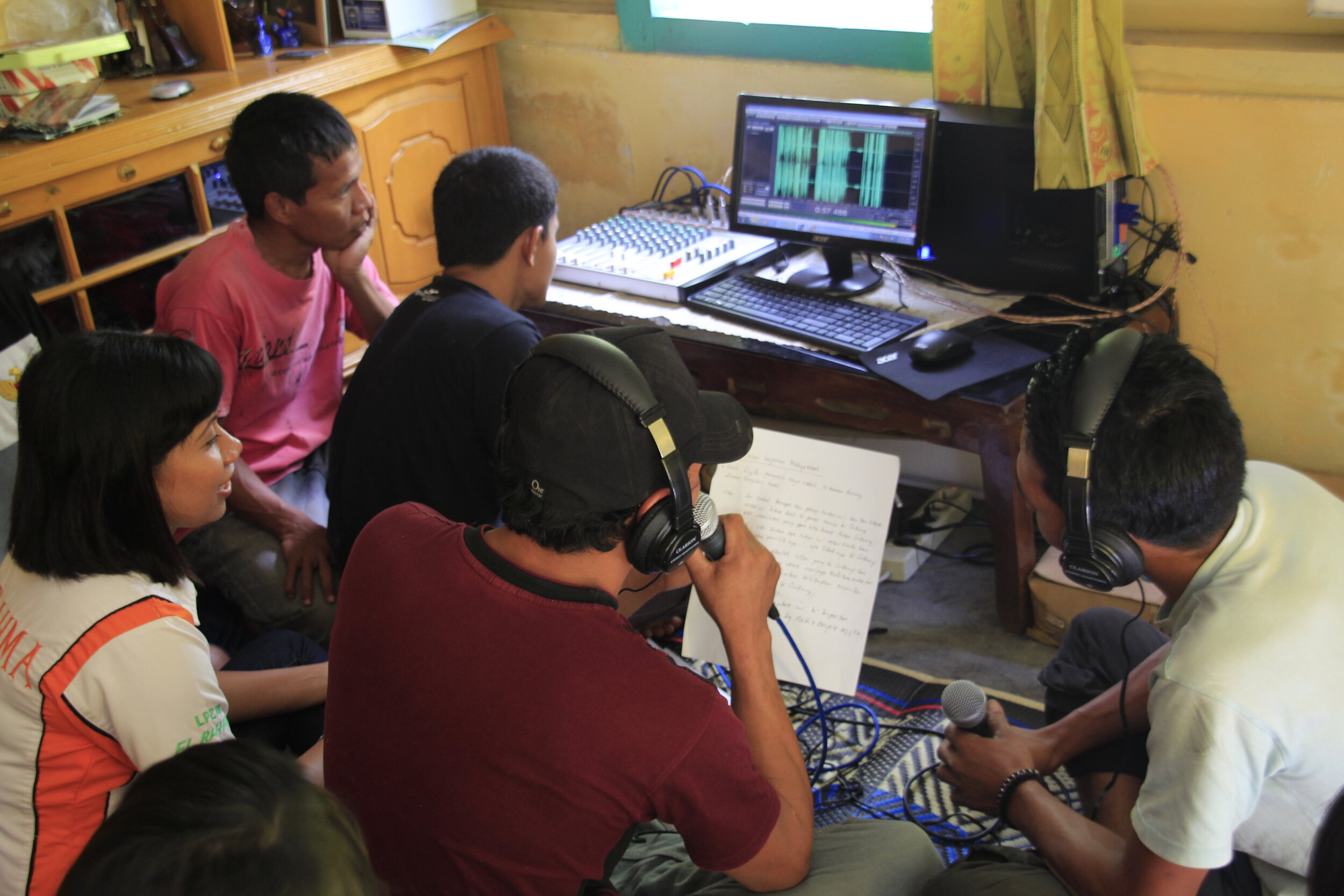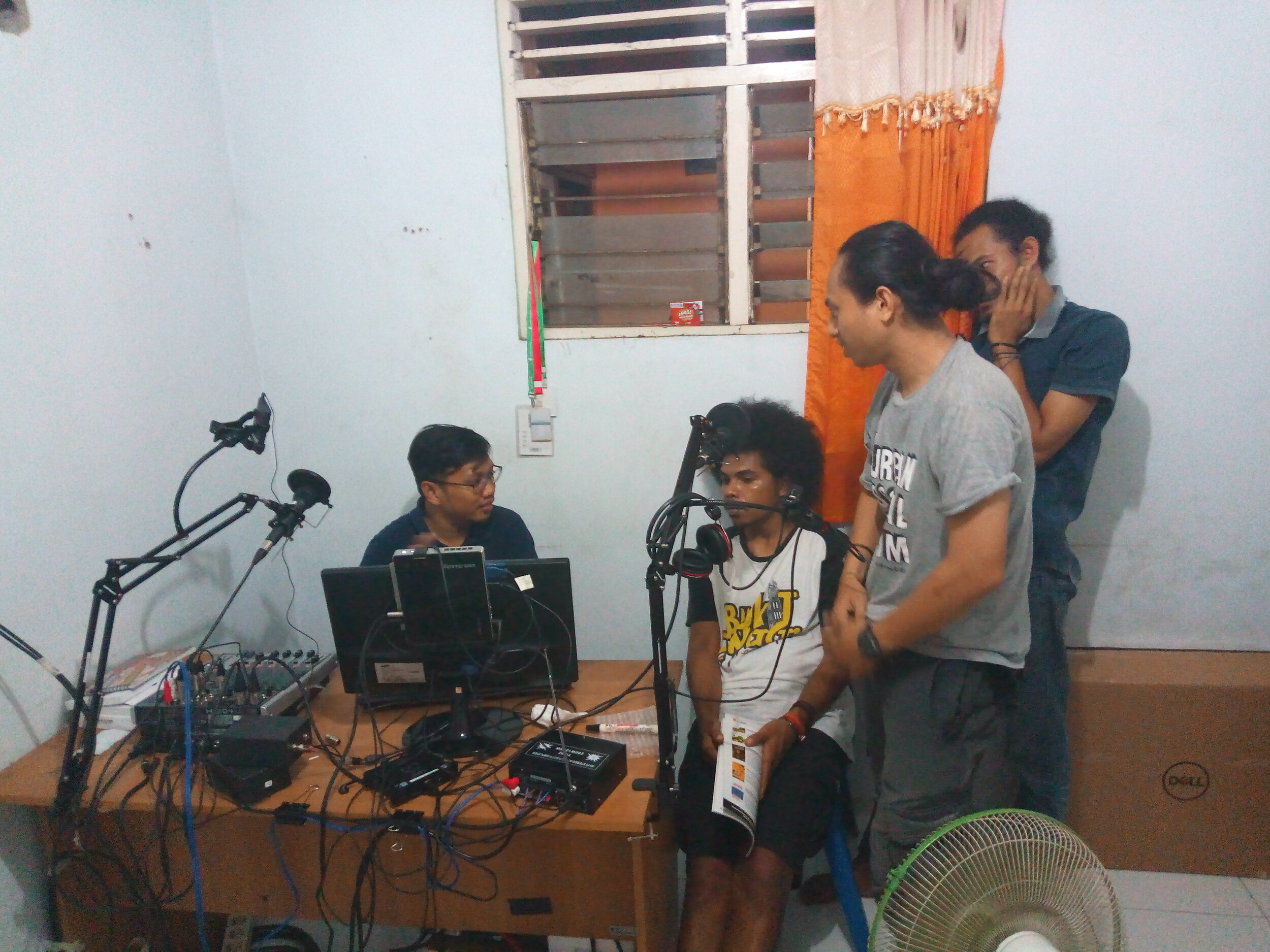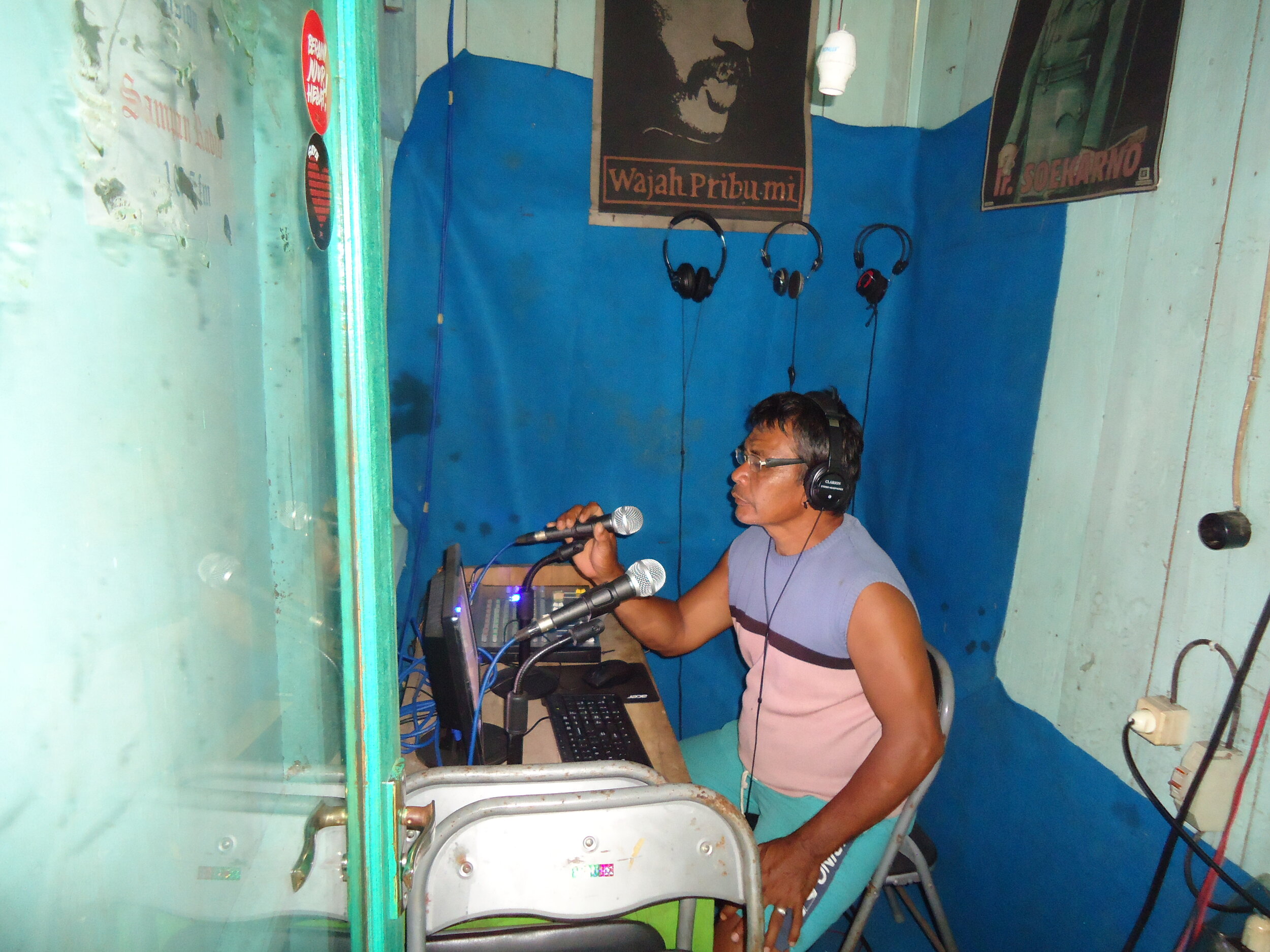Aliansi Masyarakat Adat Nusantara (AMAN)
For indigenous communities all over the world, the access to relevant information and availability of channels to amplify their concerns are still pressing needs. Gradually and increasingly, community radio is being rediscovered by indigenous peoples as an effective means of strengthening their community spirit and transmitting information within the community. Radio is especially helpful for reaching youth to support their aspirations and suggest shared actions for their well-being. Community radio is also a powerful tool to engage government agencies and call upon them to observe indigenous peoples’ rights to control their territories and resources.

In Indonesia, Aliansi Masyarakat Adat Nusantara or AMAN (Indigenous People’s Alliance of the Archipelago) and its Regional Boards set up and revived community radios from February to April 2018 in the indigenous communities of Sinjai, South Sulawesi; in Madandan Village, North Toraja; in Soe, Timor Tengah Selatan Regency’s capital; and in Talang Mamak, Riau, Sumatra. These communities, all AMAN members have varied issues and concerns that need to be amplified through radio broadcasting. They regard their community radio as a physical meeting point to share and exchange information among them and bring matters to the attention of local governments for acknowledgement and action.
Setting up radio stations entails requirements. The Boards of Community Broadcasting and Operational Boards were formally elected in the communities to establish and oversee the community radio. A field survey was conducted to choose the most suitable location. Other requirements had to be complied with such as road access, adequate electrical capacity, a working transmitter, studio room conducive for broadcasting, and reliable internet access to acquire information. Once these were acquired, AMAN held a series of trainings on the management of an operational community radio for the staff who would take charge such as the operator, broadcaster and news writer. They have to ensure that the programs stay on air and the radio stations are managed efficiently and are well maintained.

Radio Swara Tamborolangi’ in Madandan Village was established in 2002 but over time, the studio has had several damages, so AMAN had to undertake its renovation and replace the equipment and transmitter. AMAN Regional Board in Timor Tengah Selatan acted on the poor access to road and transportation, set up the radio studio in Soe, the capital of the Regency, and hired the staff to manage the community radio. The board’s house was converted into the studio which would also serve as the meeting place of the indigenous community where they can discuss their concerns and aspirations. This way, access to information and news from community could be collected faster.
The community radio in Talang Mamak, Riau, Sumatra can supposedly reach 24 communities but its location was unsuitable. Thus, AMAN, through its Regional Board decided to establish the radio station in their office of AMAN INHU and actively involved the youth in every activity including news writing related to the activities of the Regional Board.

In Sinjai, South Sulawesi, a community member noted that “One of the benefits of having a community radio here is the frequency of youth meetings. There is educational benefit for them and the regional board and community radio committee because they learn more about broadcasting. They use the program to spread information about AMAN to wider urban audience.”
The sustainability of these newly established community radios through self-reliance remains a challenge. AMAN will monitor capacity building measures for all management teams to keep their respective programs on air and to identify technical and non-technical obstacles. Follow-up trainings on broadcast content and production management shall be needed. Cooperation between AMAN and Jaringan Radio Komunitas Indonesia (JRKI) members all over Indonesia needs to be strengthened to establish potential funding linkages for supporting community radio.

In addition to setting up community radios, AMAN undertook documentation of the land and life of the indigenous Sakai tribe in Riau, Sumatra among the Batin Minas indigenous community in Siak Regency and Batin Beringin indigenous community in Bengkalis Regency. The nomadic Sakai tribe live in the forests which are being transformed by the oil industry and rubber and palm oil plantations. These industries have displaced them, caused a decline in their economic life, and contributed to loss of identity as an indigenous community. Their daily traditions have been endangered as well. For these reasons, Sakai youth were encouraged to document their history, daily life, and culture, and to ensure that the knowledge of leadership is sustained in their community. This documentation will be the basis of communication among generations for the Sakai and can help aid their fight for their rights in the face of industrial incursion.
Both community radio and cultural documentation are valuable communication and information channels, not only for indigenous youth but for entire indigenous communities to comprehend the need for collective action and to pinpoint the main issues.
The established community radio could become the media to broadcast the issues of indigenous peoples, like pushed the government to issues Local Government Regulationabout the Acknowledgement and the Protection of Indigeneous Community. There is a community radio established in each area of indigeneous communities (memberof AMAN). The Documentation of Sakai Ethnic Tribe : § Early identification about the history of Batin Minas indigeneous community in Siak Regency, and Batin Beringin in Bengkalis Regency.
(The initiative Indigenous Media as a Means for Inter-generational Communications was implemented by Aliansi Masyarakat Adat Nusantara- AMAN (Indigenous People’s Alliance of the Archipelago) in 2018 in Indonesia with the support of PAWANKA Fund.)
